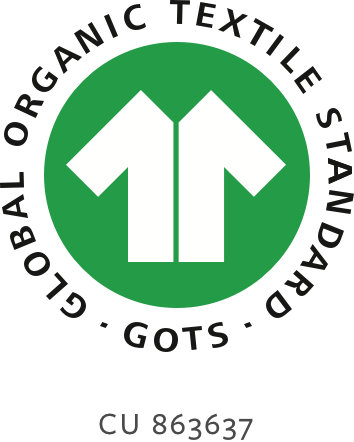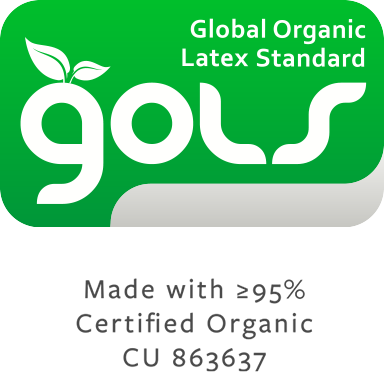Our Organic Latex
How Our Organic Latex Mattress Cores are Made


GOLS-CERTIFIED ORGANIC LATEX
The best mattresses in the world are made with organic, natural latex rubber. No other material comes close in terms of comfort, breathability, resiliency, elasticity, motion isolation, durability, support, and even biodegradability. It makes a superior comfort and support layer. (We use it for both.) And the most desirable and scarce latex is GOLS-certified organic latex — grown ethically and responsibly — without persistent pesticides and herbicides, on USDA's NOP organic-certified family cooperatives, and processed in organic-certified facilities to stringent standards. Although organic latex may look the same as natural, blended, or synthetic latex, it’s not. Organic latex is safe for farmers and their families, better for you, and better for the planet. Avocado organic latex is the only latex we use.

SUSTAINABLE FORESTRY
Avocado directly manages organic latex rubber tree plantations under programs recognized by the USDA. We adhere to governing principles and criteria for sustainable use, conservation, restoration, and respect for all.



LATEX MADE BY AVOCADO
Avocado Organic Latex processes our latex. Yes, we also jointly own our GOLS-certified organic latex processing facilities in India and Guatemala. This eliminates middlemen and costly markups, provides transparency and full traceability, and allows us to source the best organic latex for use in mattresses and pillows. At the same time, it helps us maintain the highest standards for ecology and social responsibility. No other brands do this.

HOW WE HARVEST OUR ORGANIC LATEX


IT BEGINS WITH RUBBER TREE TAPPING
Tapping a rubber tree (Hevea Brasiliensis) requires a skilled hand. Early in the morning, our tappers use a metal gouge with a sharp tip to make a shallow cut in the outer bark, at a downward angle, winding ribbon around the tree. This opens the network of continuous latex vessels that spiral around the tree without harming it. (Fun fact: Until the rubber trees are mature enough to harvest latex, we grow pineapple around them.)


MILKY WHITE LATEX, DRIP BY DRIP
At the end of the winding channel, the tapper makes a downward cut and hangs a small metal cup neatly from the side of the tree. As the milky white latex begins to flow and drip, it’s collected in the cup. Each rubber tree provides about 15 grams of latex per day.

OUR FARMERS COLLECT THE LATEX SAP
After four to six hours, the collection cup is filled with latex sap. The rubber tree can be harvested in this way about two to three times a week, except during the dry season, for approximately 25 years. No polluting machines or power tools are needed.

12 ACRES FOR ONE LATEX MATTRESS
To make a queen-size organic latex mattress, it requires the full output of approximately 2,500 rubber trees spread over 10 to 12 acres. But instead of harming the environment, the organic farming process helps it. The same number of trees will, over the course of one year, remove 143 tons of carbon dioxide from the air. They also provide habitat for animals and livestock, preserve the health of our forests, contribute to healthy water, and provide gainful employment for family farmers where jobs are often scarce.


MAKING ORGANIC LATEX CORES


OUR ORGANIC FACILITY
Avocado processes raw latex into latex rubber foam cores for use in our mattresses and pillows in our own facilities. Avocado is the only mattress brand in the world to own their organic latex processing plants. No harmful chemicals or additives are used. By using our own facility, we ensure quality, accessibility, trust, and affordability. Here's how raw latex is transformed into latex cores.

MIXED AND POURED INTO MOLDS
To make our Dunlop latex, the raw latex formulation is mixed into a frothy foam in centrifuges, where impurities are removed and protein allergens are greatly diminished. It’s then pumped into large 6-inch deep aluminum molds (very similar to an oversized waffle iron). Latex foam is a poor conductor of heat (which is great for a mattress), so "pins" are present in the mold to help heat and cool the foam. The pins make the holes that are characteristic of latex foam cores.

STEAM BAKED, RINSED, & DRIED
The mold is closed and then passed into large, circular ovens and heated to 350 degrees Fahrenheit for one hour. The ovens use steam, made from rainwater (from collection ponds) heated by burning wood harvested from expired latex trees. The resulting latex foam is then completely submerged (rather than just being rinsed) in several tanks with fresh water, before being squeezed to just 6 millimeters between steel rollers. This helps prevent allergies by extensively washing away any free proteins. The latex core then processes through industrial dryers, before being tested for weight and density.


ORGANIC DUNLOP, NOT TALALAY
Our GOLS organic certified latex in all our mattresses is processed to the original Dunlop method. The Talalay latex processing method is a newer process and more common, adding chemicals and two more steps to further vulcanize the latex. Talalay latex is slightly softer than Dunlop latex, but less durable and requires glue at the seams (since it cannot be made in larger sizes). Due to the additional processing, Talalay latex can be considered natural and tested to be non-toxic, but can never be certified as organic. This is why Avocado uses GOLS-certified organic Dunlop latex in our mattresses.

TRUSED CERTIFICATIONS
Our mattresses all use GOLS-certified organic latex that is STANDARD 100 by OEKO-TEX® and MADE SAFE® certified. MADE SAFE is a rigorous screening process for toxicity. It screens for all known and suspected harmful substances. Unlike other certifications, it does not set acceptable levels of toxicity. Instead, it prohibits all use of harmful substances. Avocado is one of only three mattress brands in the world to meet this lofty standard for safety.














